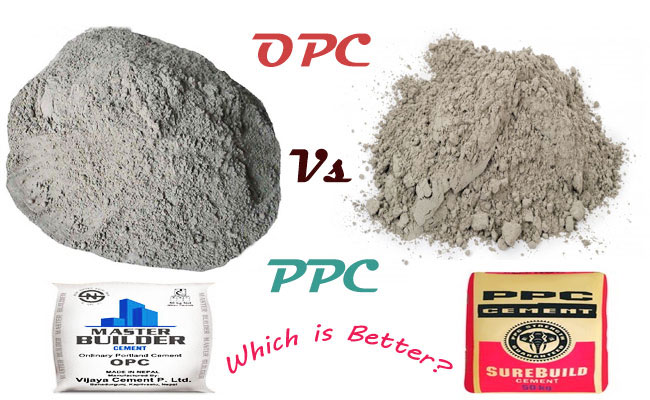Some useful features of Ordinary Portland Cement (OPC) and Portland Pozzolana Cement (PPC)

Construction materials play an important role in building industries. Now-a-day, high-rise structures are frequently constructed in different countries. This becomes possible due to technological advancements specifically in the formation of concrete. The concrete is produced by cement. Ordinary Portland Cement (OPC) and Portland Pozzolana Cement (PPC) are mostly recognized all through the globe.
Ordinary Portland Cement (OPC) is the basic element effective for concrete, mortars, stucco, and other regular construction essentials where cement is essential in the mixture. It is a sort of hydraulic cement. Once it is amalgamated with water, as a reaction, it get solidified as well as turns out to be good water-repellent after curing. It is developed with pulverizing Portland cement clinkers, which comprise of hydraulic calcium silicates to form a fine powder.
The Portland cement clinkers are primarily produced by heating a mixture of raw materials. The most vital component is limestone. Secondary materials contain a source of aluminosilicate (generally clay, but it also may be impure limestone). Other standard types of secondary materials are shale, sand, iron ore, bauxite, fly ash, and slag. Afterwards, these are heated at around 1450 °C and it is considered as the optimal temperature for forming most cements. When water is added with OPC, some hours are required to be settled and progressively solidified. Thus, the strength of concrete is raised. This method may differ according to the mixture and the desired output.
Ordinary Portland Cement is most common as the raw materials of it are easily accessible in the area where it is formed. Besides, the production cost is very low devoid of hampering the quality. As a low-cost cement product, OPC is extensively applied in the formation of concrete. OPC is also effective for mortars and producing grouts.
PPC stands for a sort of Portland Cement that is called Portland Pozzolana Cement. PPC is formed when pozzuolans are utilized in the mixture. Pozzuolana belongs to a cement extender that makes the strength and longevity of the cement better as well as minimizes the production costs of concrete significantly. The term is derived from the root word “pozzuolana,” a type of volcanic ash. If pozzuolana comes into contact with hydraulic cement like OPC or any equivalent material, it creates a pozzuolanic reaction. As a result a cementitious material is produced that employs fewer cement but contain the equivalent or even superior material strength than devoid of this addition.
A pozzuolanic material independently contains few, if any, cementitious properties, but it is added with a cement mixture, it will produce the results as above (in case the cement contains a larger volume with regard to the pozzuolanic material added). A longer time is required for the settlement of PPC as compared to OPC, but ultimately the results will be same. Pozzuolana also comprises of natural and artificial siliceous or siliceous, aluminous materials like clay, slag, silica fume, fly ash, and shale. Though some of these are considered as “waste” materials from other methods but are very effective for developing PPC. As soon as PPC is formed, the use of overall OPC is significantly curtailed in the mixture (by close to 50 percent) to obtain the equivalent results.
Article Source
www.differencebetween.net

